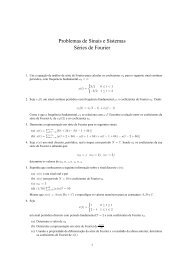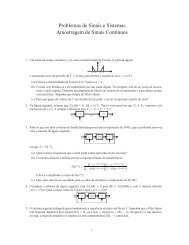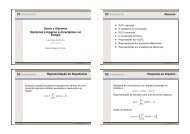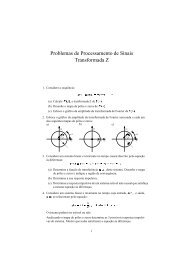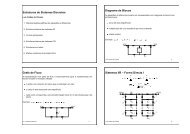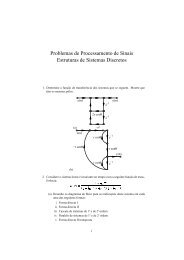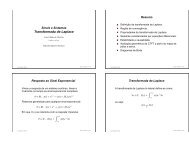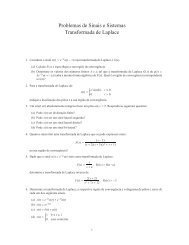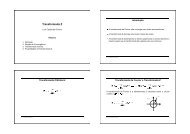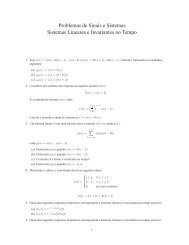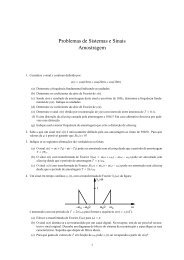You also want an ePaper? Increase the reach of your titles
YUMPU automatically turns print PDFs into web optimized ePapers that Google loves.
Impulso Unitário Contínuo<br />
Interpretação do Impulso<br />
O impulso unitário, também designado por função delta ou<br />
distribuição de Dirac, define-se por:<br />
δ ∆<br />
(n)<br />
∆<br />
∫ +ɛ<br />
δ(t) = 0, t 0<br />
...<br />
...<br />
−ɛ<br />
δ(τ)dτ = 1, ∀ɛ ∈ +<br />
−1/2∆ 0 1/2∆<br />
t<br />
δ(t) = lim<br />
∆→0<br />
δ ∆ (t)<br />
A função δ(t) não se encontra definida para t = 0<br />
.<br />
.<br />
<strong>Sinais</strong> e <strong>Sistemas</strong> – p.25/50<br />
<strong>Sinais</strong> e <strong>Sistemas</strong> – p.26/50<br />
Representação do Impulso<br />
Propriedade de Amostragem<br />
...<br />
δ(t)<br />
(1)<br />
...<br />
x(t)δ ∆ (t) ≈ x(0)δ ∆ (t)<br />
lim ∆(t)<br />
∆→0<br />
= lim x(0)δ ∆ (t)<br />
∆→0<br />
0 t<br />
A amplitude da seta indica a área do impulso e não o<br />
valor para t = 0.<br />
x(t)δ(t) = x(0)δ(t)<br />
.<br />
.<br />
O produto de uma função por um impulso produz um impulso<br />
com área igual ao valor da função no instante do impulso.<br />
<strong>Sinais</strong> e <strong>Sistemas</strong> – p.27/50<br />
<strong>Sinais</strong> e <strong>Sistemas</strong> – p.28/50



